Musings

Backlit leaves, aglow.
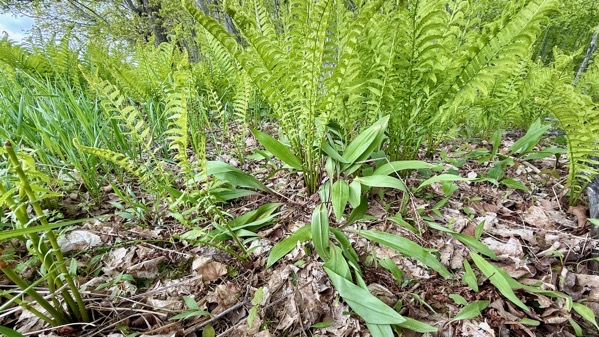
Ferns and ramps (wide angle).

Siberian apple; polinator tree, not for eating. More of the apple trees are blooming.
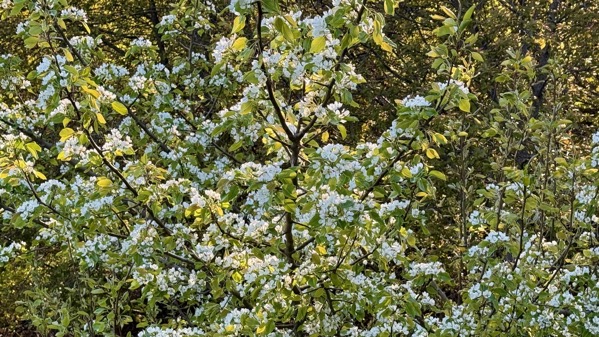
Backlit pear, sure to be heavy with fruit.
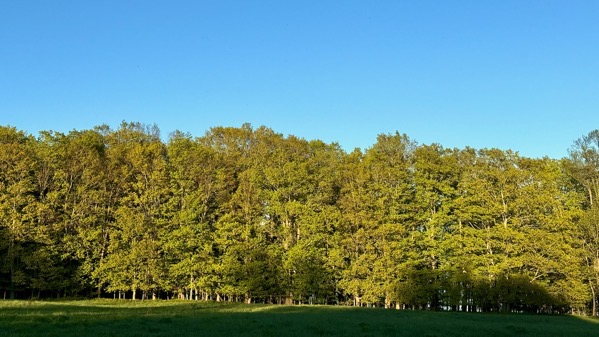
The woods, an hour after the backlit pear, so the opposite direction,. The opposite word/phrase—is it fully-lit?
Posted at 9:55 PM |
Comments Off on Lighting, blooming, more
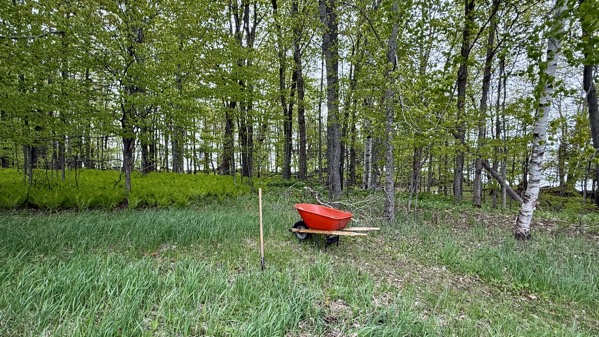
Today, I restarted the cow parsnip/hogweed eradication program. They show up in this corner of the field. Right now they’re small and spindly, but if I don’t get them out of the ground they’ll become more robust, and thus more of a problem. [I didn’t get after them last year, as I recall, and I’m regretting it.] The soil is damp enough that they’re reasonably easy to separate and remove from the clods I remove with the shovel. It’s a dull chore, but necessary. We have youngish kids coming this summer, I hear, and they don’t need to tangle with the phytophototoxic compounds this plant contains.
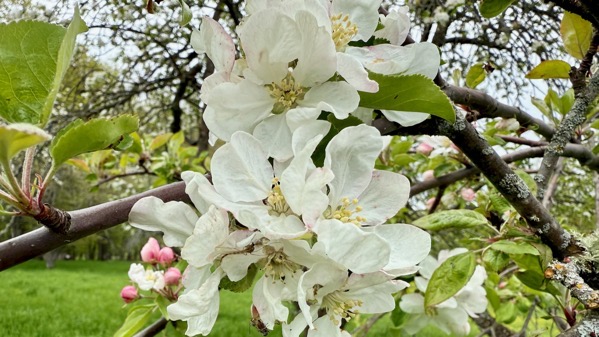
In far more pleasant botanical news, the apple blooms are beginning to open. I should have waited until late afternoon when the sun came out to get a better picture.
Posted at 9:34 PM |
Comments Off on Floral environs
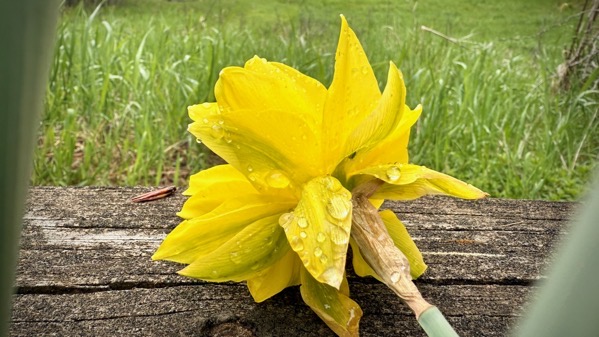
Proof we had rain overnight….

Proof it wasn’t much. [The rain barrel stays indoors all winter…if I don’t forget—so this is MaNachur’s first deposit of 2025.]
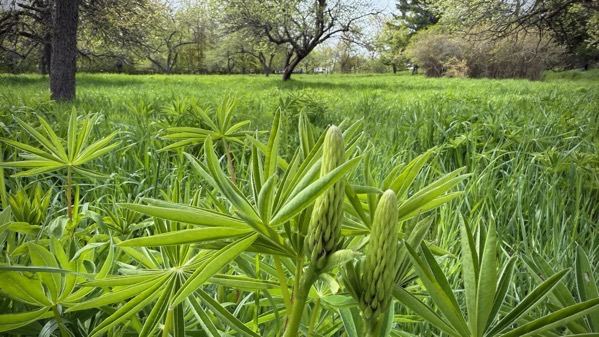
First lupin buds I spotted…the rest are just vegetation for now.

Although the summer veg crop is not coming in yet, we went for a veggie-laden dinner…raw lettuce, tomatoes, and radishes, plus “semi-stir-fried” broccoli…with medallions of salt-n-peppa pork tenderloin. [Lousy photo quality, but the eatin’ was good!]
Posted at 10:30 PM |
Comments Off on Damp-day

We drove in rain a ways, then just on wet roads, but we only had heavy overcast when we crossed the bridge. Note in the lower left, just over the railing—blue skies!

And even sunshine at the cottage! (…although now there’s a light overcast again…and a low of 41°F predicted overnight—yowzah!) BTW, my weather-and-more app indicates we have a day length of something like 70 minutes longer than we did where we were yesterday morning. Sure enough: it’s plenty light out even now, as I post.

The lake level is pretty high, at least according to my memory, which goes back to the 60s, heh-heh. We have been notified of a meeting early in June about agreeing on target lake levels winter and summer…wonder how contentious it’ll be….
Posted at 8:55 PM |
2 Comments »
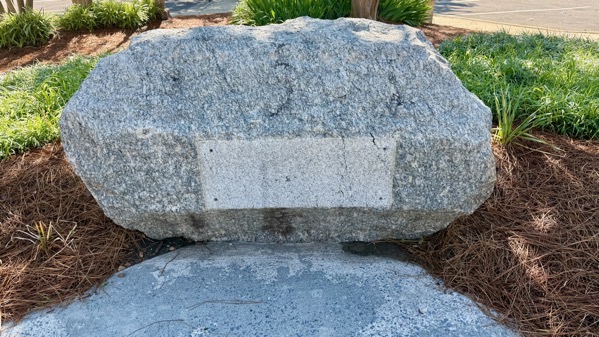
A storm came through overnight, rainy and windy enough to wake me up. Yawn. So, enough, we thought; let’s get on the road. (Truth: trip was planned.) The storm festooned this north Georgia rest area with many tree leaflets, and this rock no longer carries its message.
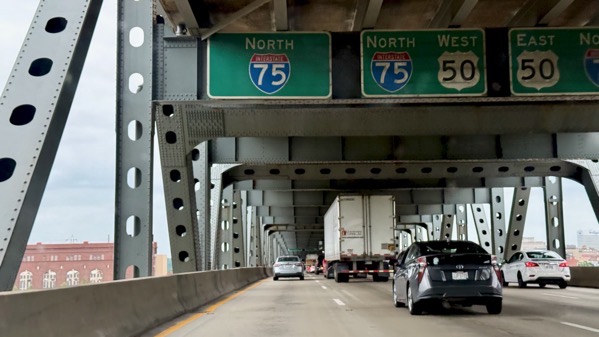
In contrast, crossing the Ohio River, we saw plenty of signage. Yup, north on I-75, that was us—and we’ll motor more tomorrow to the usual location near the northern end of this interstate.
Posted at 10:49 PM |
Comments Off on Huzzah
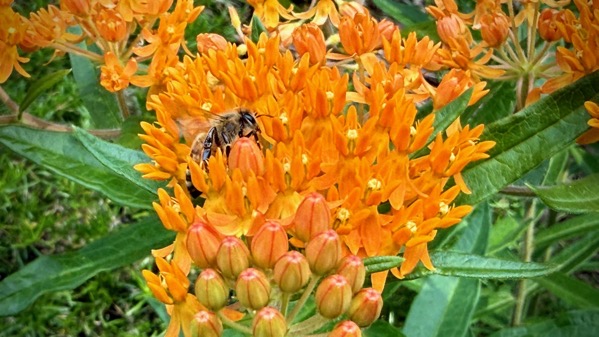
What is the statement of the day based on this image, I was thinking a few minutes ago. Hmm.
A bee crawls through a milkweed quite without effort? Too simplistic.
Orange and green are my new favorite color pairing? Yeesh, who would believe that.
Garden life is captivating? I’ll take that.
Posted at 8:01 PM |
Comments Off on Problem solving
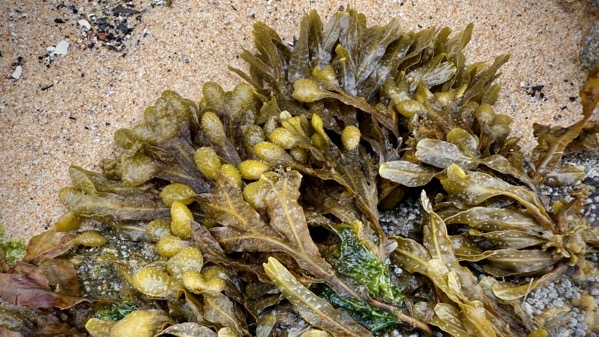
I feel like Atlanta has slammed into summer, with robust heat and humidity mantling the city and slowing me down. This photo reminds me of the cool of the beach at Provincetown, on Cape Cod, two weeks ago.
Posted at 9:15 PM |
Comments Off on Ah, memories
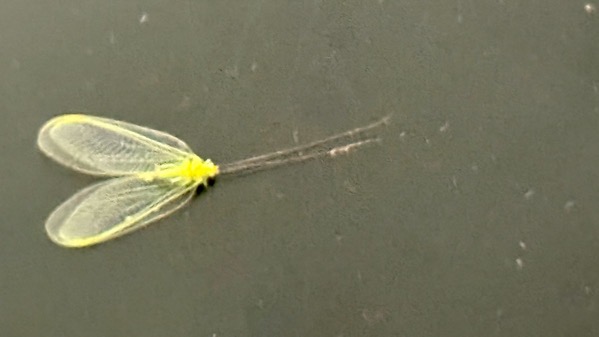
This critter got trapped inside our house. I’m thinking it’s some kinda green lacewing. And, yeah, this shot’s outta focus.
Posted at 8:49 PM |
Comments Off on Little big

Our neighborhood was a mecca today; it hosted Porchfest (music), with plenty of amps in use. This meant cars cruising for at least a three-mile radius looking for parking places in already choked streets–with the center of festing about two blocks from us.
We had to do an errand, so we got to “enjoy” all this congestion (cough cough). The 2.3 miles each way took almost an hour on a hot, muggy afternoon. Glad we had AC!
Posted at 10:04 PM |
Comments Off on Saturday excitement
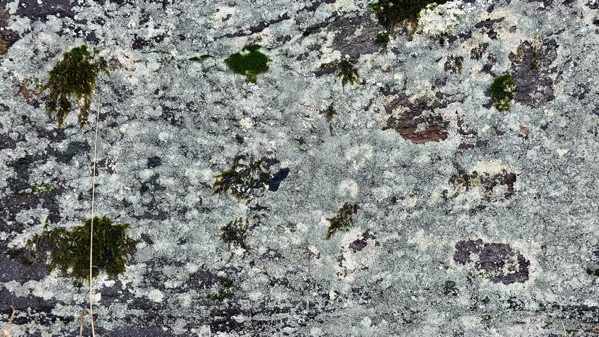
Ageless. That’s my perception, but of course they aren’t.
Posted at 9:21 PM |
Comments Off on Lichen imagination




















